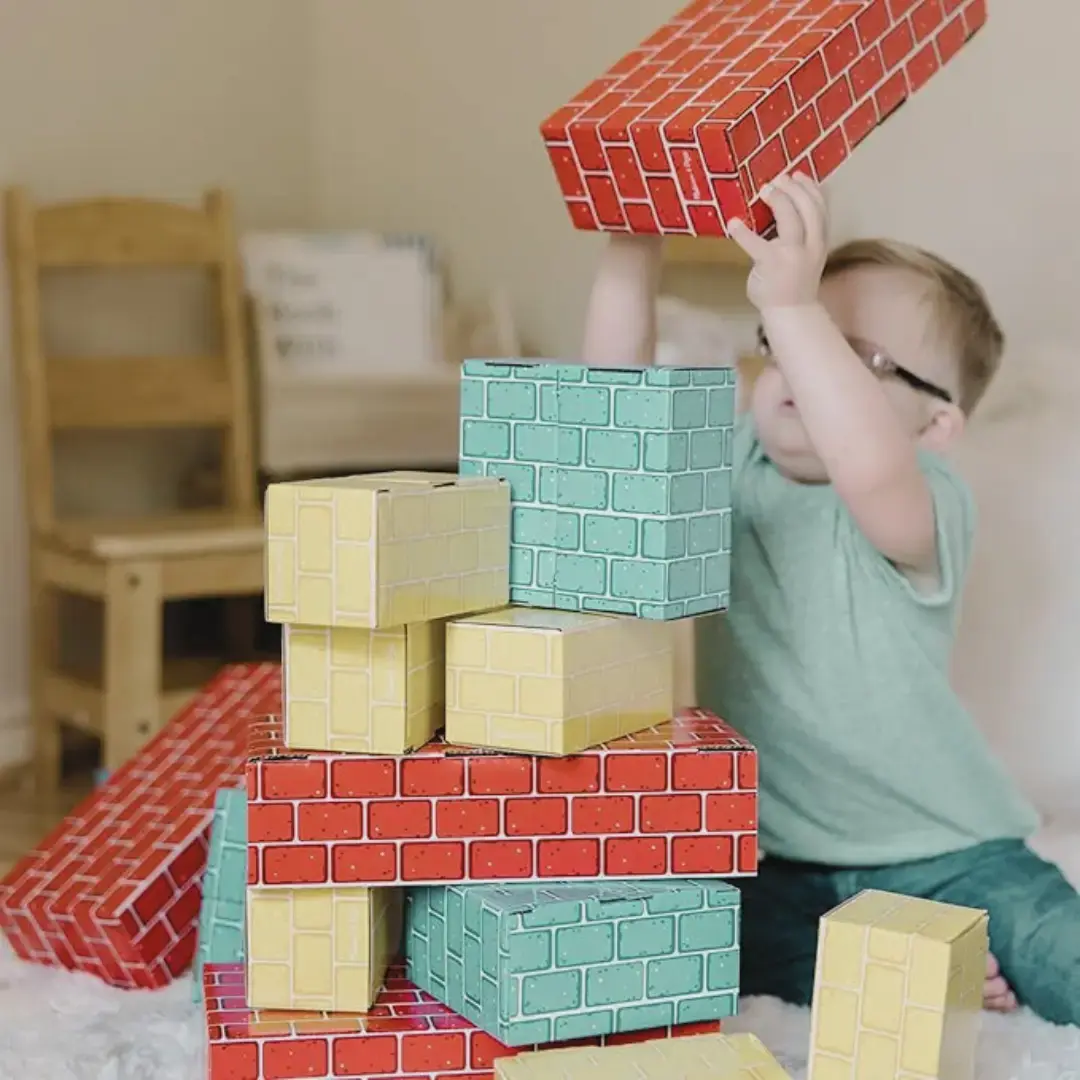In conversation with Leanne Chorekdjian-Jojaghaian from Leanne Signed Stories
Story time should be something every child can enjoy, but for some families, it can be hard to find books that truly work for the way their child learns and communicates.
Leanne has created a space where stories are told in a way that feels accessible, engaging and inclusive.
A Qualified Teacher of the Deaf and SENCo, she brings books to life through her YouTube channel Leanne Signed Stories, using a mix of British Sign Language, Sign Supported English and gesture. Her videos support children with a wide range of communication needs, including those who are deaf, non-verbal, or who benefit from visual and sensory support.
In this conversation, Leanne chats to SEND EDventures about the power of signing, what helps families feel more confident at home, and why inclusive storytelling makes such a difference.
Meet the Person Making a Difference
What led you to work with deaf children and young people?
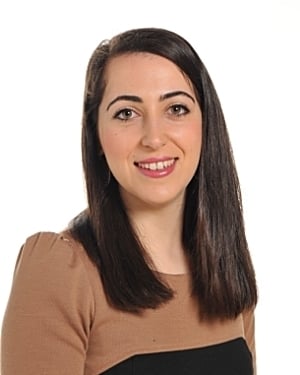 I’ve always had a passion for working with children and quite quickly after qualifying as a teacher, I realised my real passion was inclusion, and I was drawn to working with children who face barriers in accessing language and communication. I had learnt British Sign Language while I was at university, and I quickly felt these skills were great at supporting the children I worked with at the time. I joined a school with an additionally resourced provision for deaf children and the beautiful visual nature of BSL supported them to access my mainstream class. It quickly became clear to me how vital early access to language is—not just for learning, but for confidence, identity, and emotional development. I then decided I wanted to specialise in deaf education. Training as a Teacher of the Deaf allowed me to combine my love of teaching with a commitment to advocating for deaf children and ensuring they have every opportunity to thrive. In order to fully immerse myself in deaf education, I completed a Masters with Distinction in Deaf Education and later completed a National Award for Special Educational Needs Coordinator and British Sign Language qualifications to Level 6. I currently lead a deaf resource base in London as a Lead Qualified Teacher of the Deaf and SENCo.
I’ve always had a passion for working with children and quite quickly after qualifying as a teacher, I realised my real passion was inclusion, and I was drawn to working with children who face barriers in accessing language and communication. I had learnt British Sign Language while I was at university, and I quickly felt these skills were great at supporting the children I worked with at the time. I joined a school with an additionally resourced provision for deaf children and the beautiful visual nature of BSL supported them to access my mainstream class. It quickly became clear to me how vital early access to language is—not just for learning, but for confidence, identity, and emotional development. I then decided I wanted to specialise in deaf education. Training as a Teacher of the Deaf allowed me to combine my love of teaching with a commitment to advocating for deaf children and ensuring they have every opportunity to thrive. In order to fully immerse myself in deaf education, I completed a Masters with Distinction in Deaf Education and later completed a National Award for Special Educational Needs Coordinator and British Sign Language qualifications to Level 6. I currently lead a deaf resource base in London as a Lead Qualified Teacher of the Deaf and SENCo.
What inspired you to start your YouTube channel, and how did the idea for story signing come about?
The idea for Leanne Signed Stories was born out of the COVID-19 pandemic in 2020. Teachers had to very quickly devise clever and accessible ways to educate pupils remotely. We began live lessons for our pupils in BSL and Total Communication, but I quickly came to realise that the pandemic posed more challenges to families once live lessons were finished for the day. I developed the idea to make signed storytelling more accessible beyond the classroom, so that the entire family could share stories at bedtime together and learn some sign language along the way. This made bedtimes accessible for deaf children and their hearing families or siblings and provided a unique bonding experience, which in turn would reduce the frustrations and tensions which being in a lockdown situation might present. I’ve seen firsthand how powerful stories are for developing language, building imagination, and creating shared experiences—especially for deaf children who may not always see themselves reflected in mainstream media.
I wanted to create a space where families, schools, and deaf children could access signed stories anytime, anywhere, using Total Communication approaches. It started as a passion project, but the feedback I received from parents and educators really affirmed its value. The goal was always to create sign-supported stories that are fun, engaging, and inclusive.

For those unfamiliar with Total Communication, how would you describe it, and why is it so important for the children and families you support?
Total Communication is an approach that uses a combination of methods—spoken language, British Sign Language, gestures, facial expressions, pictures, and written words—to support understanding and expression. It’s not about choosing one method over another; it’s about finding what works best for each child and adapting as their needs change. It’s also about empowering children to be exposed to a range of communication methods that they can utilise themselves as they develop and grow older. Many children do decide to immerse themselves in the deaf world and use full BSL, while others decide they want to use spoken language and some continue to use spoken language and BSL side by side. The choice is theirs to make and if they are exposed to as many methods as possible to communicate, it means the child can make an informed decision about their own communication methods as they grow and become increasingly able to advocate for themselves.
For the deaf children and families I work with, Total Communication offers flexibility and reassurance. It bridges the gap between different communication styles and ensures that no child is left behind because of how they access language. It empowers families to connect with their children in ways that feel natural and supportive. At its heart, it’s about giving every child a voice—however that voice may be expressed.
What Parents Ask Most
Many of our readers are parents or carers of children with speech and language difficulties, hearing impairments, or those who respond better to visual communication. These are some of the questions they often ask.
My child is learning a few Makaton or BSL signs at school, but I’m not confident using them at home. What’s the best way to get started as a parent?
First of all, it’s wonderful that you want to support your child’s communication at home—that in itself makes a big difference. You don’t need to be fluent or perfect; using even a few consistent signs in everyday routines can have a huge impact. Start small and meaningful—signs like “more,” “drink,” “eat,” “finished,” “toilet,” or “bath” can fit naturally into daily life. You can even use your own gestures and facial expressions to support communication.
Repetition and routine help children learn, so using the same signs during the same activities each day builds their understanding. Watching simple signed story videos or children’s songs online can help you and your child learn together in a fun, pressure-free way. And remember, your facial expressions and tone of voice add just as much to communication as the signs themselves. You can ask your child to teach you the signs they learn at school and you can even ask the school to let you know which signs they’ve learnt, as there can be some regional variations. Finally, be kind to yourself—it’s okay to learn alongside your child. If you want to develop your skills further, you can look at informal beginner classes in BSL and even complete a more formal BSL Level 1 qualification! There are many ways to learn (online, face-to-face, or self-paced) and there will be the right one for you if you want to take your knowledge to the next level.
Could introducing sign language or Makaton confuse a child who can hear but hasn’t started talking yet?
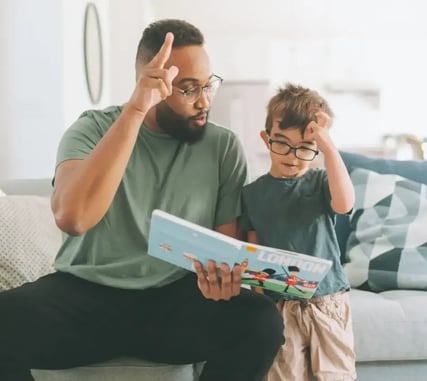 Not at all—in fact, using signs can support and encourage speech development. Signs provide children with a means of expression before their spoken language is fully developed, which can reduce frustration and help them feel understood. For hearing children, signing acts as a bridge to speech—not a replacement for it. Many children will begin to speak as they continue to sign, and some may even drop the signs once talking becomes easier for them. Signing doesn’t delay speech—it gives children another tool to communicate effectively and confidently, especially if they’re experiencing delays or challenges in their speech and language journey. Signs are also a visual way to represent information and instructions and can support children to understand more complex language in a multisensory way.
Not at all—in fact, using signs can support and encourage speech development. Signs provide children with a means of expression before their spoken language is fully developed, which can reduce frustration and help them feel understood. For hearing children, signing acts as a bridge to speech—not a replacement for it. Many children will begin to speak as they continue to sign, and some may even drop the signs once talking becomes easier for them. Signing doesn’t delay speech—it gives children another tool to communicate effectively and confidently, especially if they’re experiencing delays or challenges in their speech and language journey. Signs are also a visual way to represent information and instructions and can support children to understand more complex language in a multisensory way.
How do I make story time more engaging for my child who struggles with attention or communication?
Story time doesn’t have to look like sitting still and reading quietly from start to finish—and that’s okay! Many children engage more when stories are interactive, visual, and playful. Try using props, toys, or puppets to bring the story to life. Use gestures, facial expressions, or simple signs to help your child follow along and feel involved. You can even just act out the images in the story before approaching any of the language in it. You don’t have to read a story from cover to cover each night; you can begin by going at a pace that works for your family. It can be a page a night, moving to a few pages at a time until your child is able to sit through from cover to cover.
Short, repetitive stories are often easier for children to engage with, especially those with communication difficulties. You might also pause to ask questions, point to pictures, or let your child help “tell” the story using actions or signs. Signed story videos can be a great supplement too—they combine visual language with storytelling and can hold a child’s attention in a way that’s both educational and fun.
Above all, keep it relaxed and enjoyable. Story time is about bonding and building a love of language—not perfection.
What Every Parent Deserves to Know
Is there a common misunderstanding or myth about signing or deaf awareness that you’d love to clear up for parents?
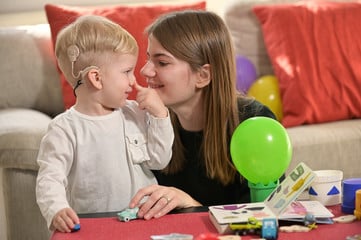 Yes—one of the biggest myths is that using sign language will hinder or delay a child's ability to learn to speak. This simply isn’t true. In fact, signing often supports language development by providing children with a means of expressing themselves before they can speak. For deaf children and for hearing children with speech and language challenges, signing reduces frustration and builds confidence. It’s a bridge to communication, not a barrier.
Yes—one of the biggest myths is that using sign language will hinder or delay a child's ability to learn to speak. This simply isn’t true. In fact, signing often supports language development by providing children with a means of expressing themselves before they can speak. For deaf children and for hearing children with speech and language challenges, signing reduces frustration and builds confidence. It’s a bridge to communication, not a barrier.
Another common misunderstanding is the idea that all deaf children are the same. The truth is, deafness exists on a spectrum. Every child has unique needs, strengths, and ways of communicating—there’s no one-size-fits-all solution. This is why giving children as many ways to communicate as possible is key. What’s important is listening to the child and supporting them in the way that works best for them and their family.
What is something you see regularly in your work that makes you think, “I wish more parents knew this”?
I often wish more parents knew how powerful early exposure to visual communication really is. Whether it’s using signs, pictures, gestures, or facial expressions—these aren’t just “extras,” they are essential tools for helping a child access language, especially in those early years. And you don’t have to be a specialist to do it well—your natural interactions, your love, and your efforts to connect are what matter most. Play games and sing with your child, maintain eye contact with them and give them lots of cuddles and positive touch (like baby massage) – these are all forms of communication!
I also wish more parents knew that it’s okay not to have all the answers. The journey with a deaf child or a child with communication needs is unique, and there’s support available. You don’t have to be fluent in BSL or a speech and language therapist to make a real difference—you just need to be open, curious, and willing to learn alongside your child.
Could you share one or two practical ideas that parents can try at home today to support communication, whether their child is deaf, has delayed speech development, or is still in the process of language development?
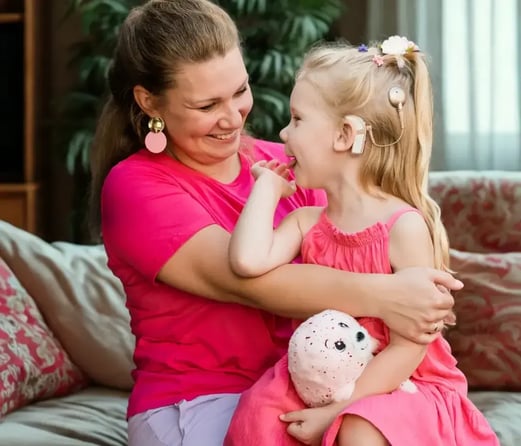 Absolutely! One really simple strategy is to slow down your communication and give your child time to respond—even if they don’t respond with words. Pause after speaking, use facial expressions, and watch for their reactions. Communication isn’t just about talking—it’s about connecting.
Absolutely! One really simple strategy is to slow down your communication and give your child time to respond—even if they don’t respond with words. Pause after speaking, use facial expressions, and watch for their reactions. Communication isn’t just about talking—it’s about connecting.
Use lots of eye contact and smiles to reassure your child that you’re welcoming communication from them and that you’re listening to them with your full attention.
Another great idea is to pick a few key signs and use them consistently throughout the day during routine activities like snack time, bath time, or bedtime. For example, you might use signs like more, drink, all done, or book.
Repetition in natural, meaningful moments really helps language stick—and if your child sees you enjoying it, they’re more likely to join in! Use lots of praise and positive reinforcement if they use a sign or try to produce sounds linked to words you’ve used. This helps them to develop their confidence.
You could also use signs or gestures for their favourite nursery rhymes (like wheels on the bus) and then embed those in your everyday language to support children to make those connections when they see a bus in real life!
Can you recommend one of your favourite Signed Stories videos for beginners to watch together as a family?
One of my favourites for beginners is Dear Zoo because it’s repetitive, visual, and introduces useful vocabulary in a fun and gentle way. It’s perfect for families new to signing, and the structure of the story helps children anticipate what’s coming next.
Watching signed stories together creates a shared experience that builds connection, supports understanding, and encourages early literacy—without feeling like “work.”
We’d love to finish by asking: What brings you the most joy about what you do?
What brings me the most joy is seeing the spark when a child realises they’ve been understood—when they sign something for the first time, or engage with a story, or simply light up because they’ve made a connection. Those are the moments that matter.
I feel incredibly privileged to support children and families in finding their voice—whatever form that voice takes. Knowing that I can play a small part in making communication more accessible and joyful is what keeps me inspired every day.
Disclaimer: The views and opinions expressed in this interview are those of the individual or organisation featured and do not necessarily represent or reflect the position of SEND EDventures.

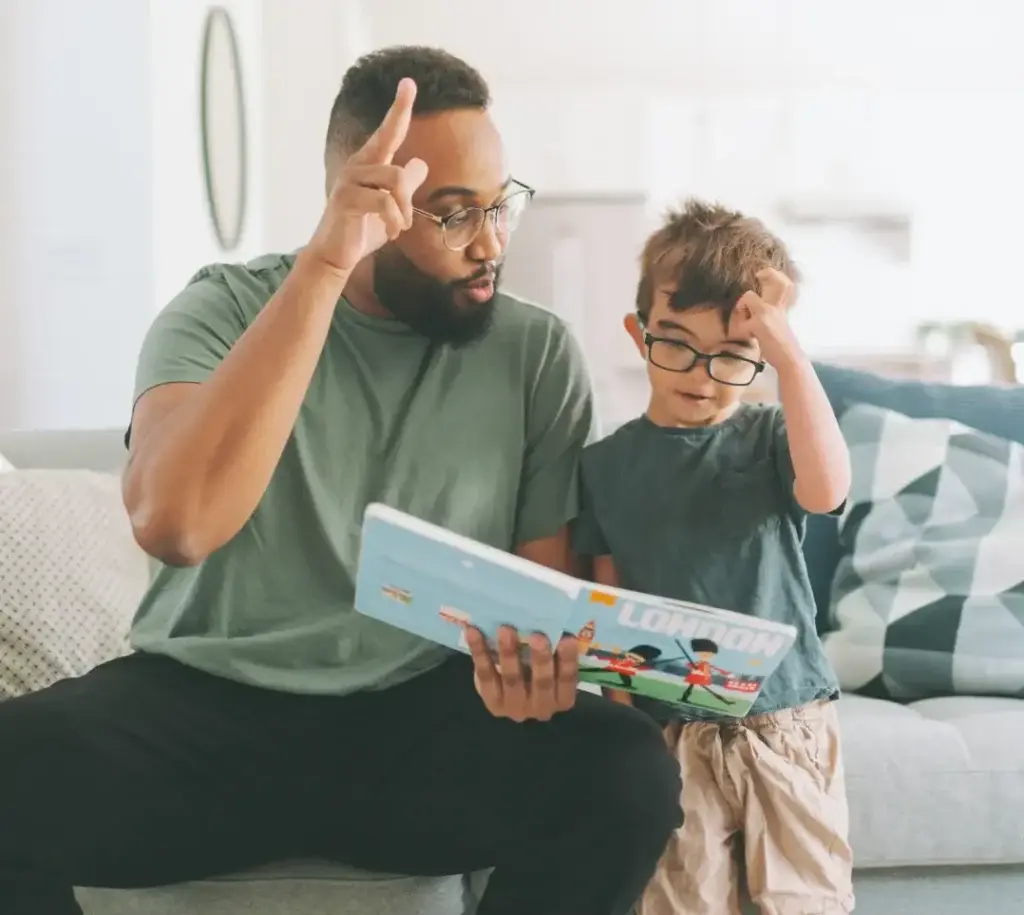
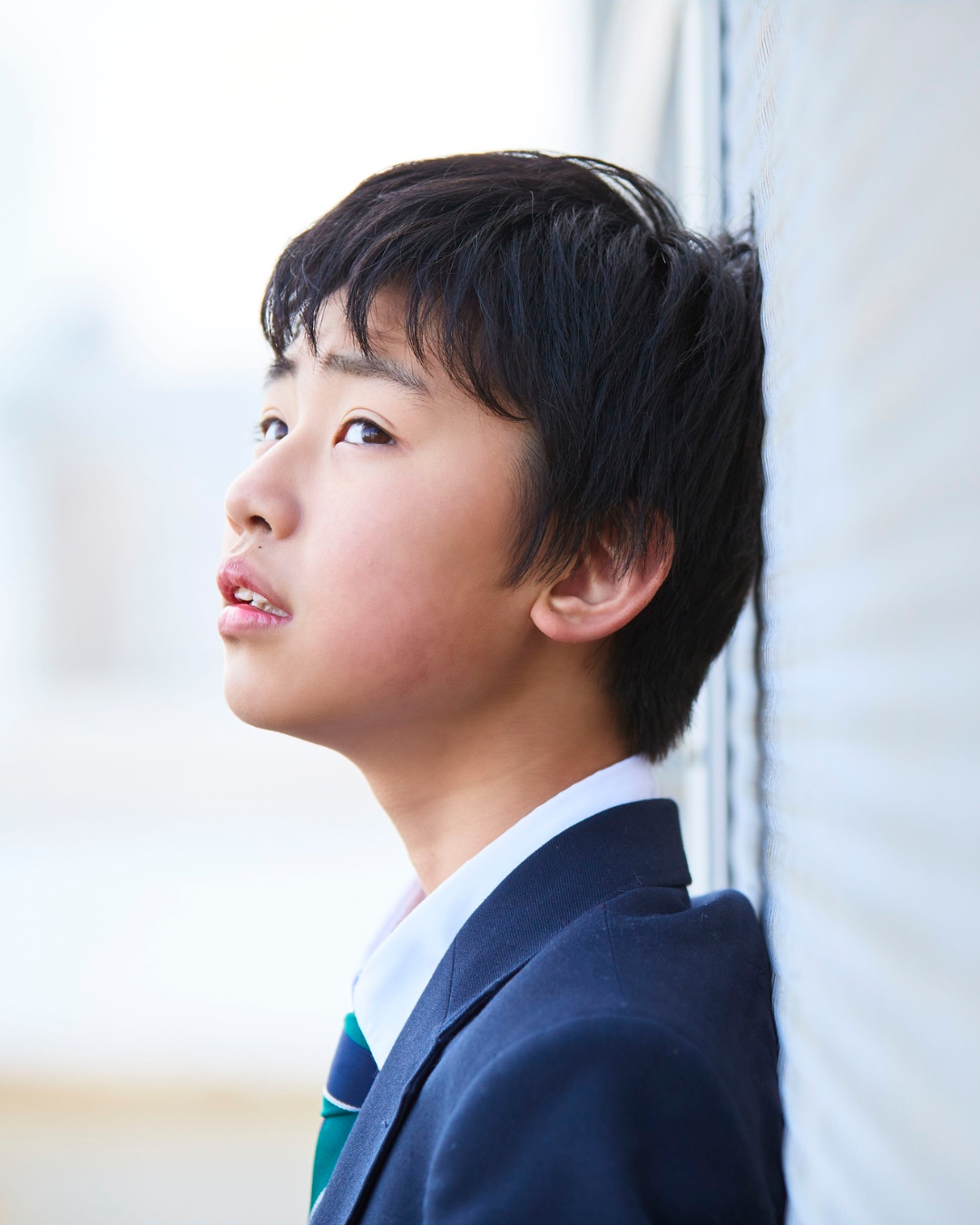

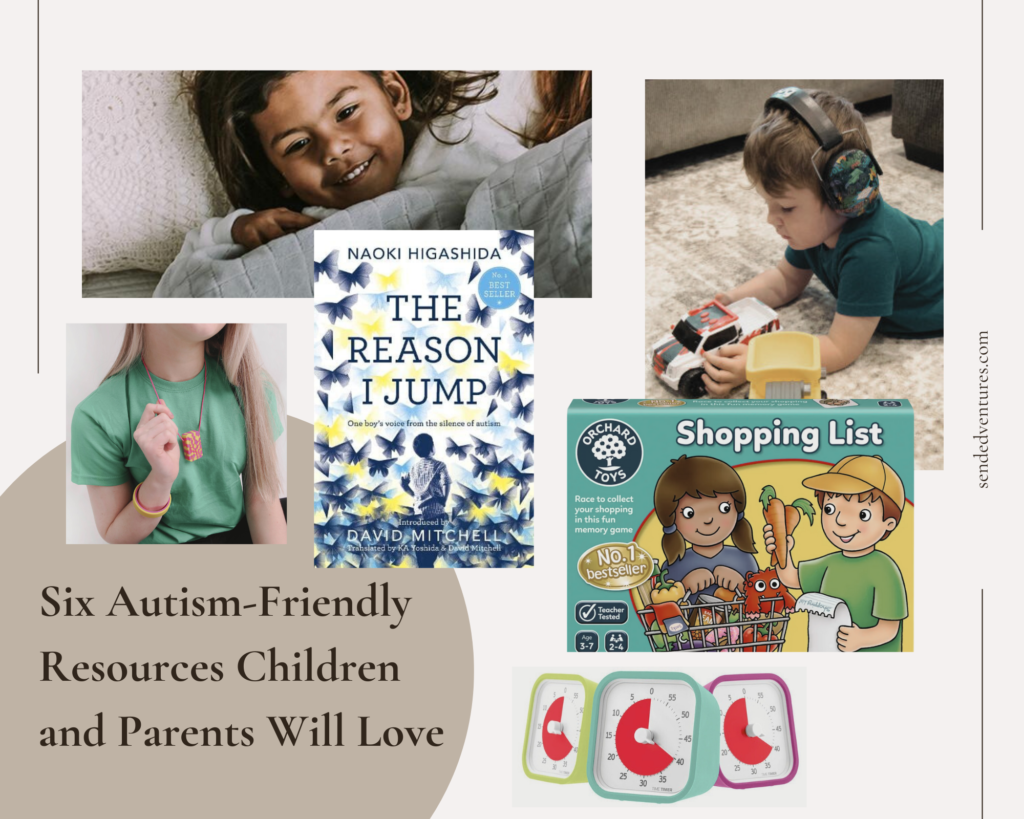
-1.png)
